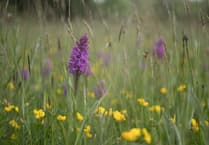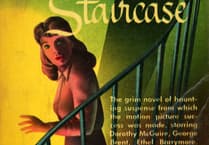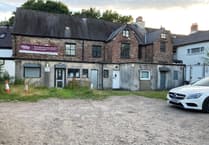A purpose-built, luxurious and rent-free residence that remains shunned and unoccupied by its targeted clientele is literally driving its owners quite 'batty'.
Nestled at the foot of the Skirrid Mountain, the custom-made bat-house, built by the owners of the Wernddu Golf Club to protect the resident population of protected bats, has so far failed to be a hit with the winged enigmas who are mysteriously reluctant to become residents in their tailor-made modern-age dwelling of breeze block and wood.
The building was completed in February of this year at a cost of some £20,000 yet to date not one solitary bat has crossed the threshold to pop the cork and raise a glass to their new hearth and home.
"To be realistic it will probably take a while for them to move in, because they are blind after all," joked Wernddu Golf Club owner Graham Watkins (pictured), who has become quite knowledgeable by necessity on the subject of bats, following his application for planning permission to convert three barns and four sheds situated upon his land for residential use.
Mr Watkins explained, "During the original survey, evidence of seven bats was found in two or three of the barns, and because we had applied for single planning permission for all seven units, that's when the problems arose."
During the subsequent bat survey commissioned by Monmouthshire County Council and costing Mr Watkins £2,000, evidence emerged that the brown long-eared bat and the Pipistrelle, both protected species, were in confirmed residence at Wernddu.
The Pipistrelle is the smallest and most common of Britain's 17 species of bat. As its name suggests, the brown long-eared bat has strikingly large ears, three-quarters the length of the head and body.
Experts explained that the bats in the barns would fly down to the railway bridge towards Abergavenny and beyond Maindiff Court to their courting area.
Mr Watkins told the Chronicle, "The original proposal put forward by the authorities is that we could make provision for the bats in the roof space of all seven units.
"However, because we wanted to sell the units as houses, we were a bit concerned that people would not want to buy a new home with bats in their roof.
"In hindsight I think if we had made separate planning applications for all seven units, then the provision of space for the bats would have only effected two or three of the buildings, but as it stood we had no option but to build a specially designed bat house."
The bat house which cost £15,000 to build, is about the size of a double garage.
Mr Watkins, who was also required to pay an additional cost of £3,000 for the required bat permit, said, "There was no problem at all getting planning permission for the bat house.
"It was such an easy process, but what I didn't realise is the powers that be would want is so well constructed."
The house which complies to proper building regulations, is made out of breeze block and wood with special cavity wall insulation and a purpose-built high pitched roof, with unique access so the bats are able to fly in and hang from the rafters.
The house also has a special entrance with a little porch and a door for humans so bat watchers can creep in and observe the bats."
"Apparently bats like cavities, so hence the reason for the walls," revealed Mr Watkins, who added, "The high-pitched roof is to enable the bats to hang from the rafters, because they need at least two metres when they drop, before they can get their bearings and take to the wing."
"We had a window of a few months to do the roofing work while the bats were hibernating elsewhere, and during that time we also had to make the other seven units as unattractive to bats as possible, so that when they returned they'd take to their new home."
Yet to date, those bats which returned in the Spring, have shunned not only the seven units, which have now been sold, but also the new building, and Mr Watkins believes they have now moved into his adjacent farmhouse, which dates back to 1060 and was once occupied by William the Conqueror's niece.
"We have been sharing our house with bats for as long as I can remember. But they don't seem to be taking to the modern new build at all," said Mr Watkins.
The farmhouse which was rebuilt in the 17th century has a host of nooks, crannies and cobwebs in the roof area, and is such a perfect haven for bats.
In fact it may be simply the case that the modern
utility-designed building may not be in keeping with the bats traditional tastes for haunting ancient and crumbling gothic architecture, shrouded in mist, mystery and history.
Yet as Mr Watkins explained, "I'm sure the bats will warm to their new home eventually.
"I hope so, because I'm all for keeping a balance in nature, I just didn't think it would cost me so much on a financial level.
"Yet the good news is that a few house-martins have already started to use the house, so hopefully the bats will soon follow suit."





Comments
This article has no comments yet. Be the first to leave a comment.